Castles in Wales
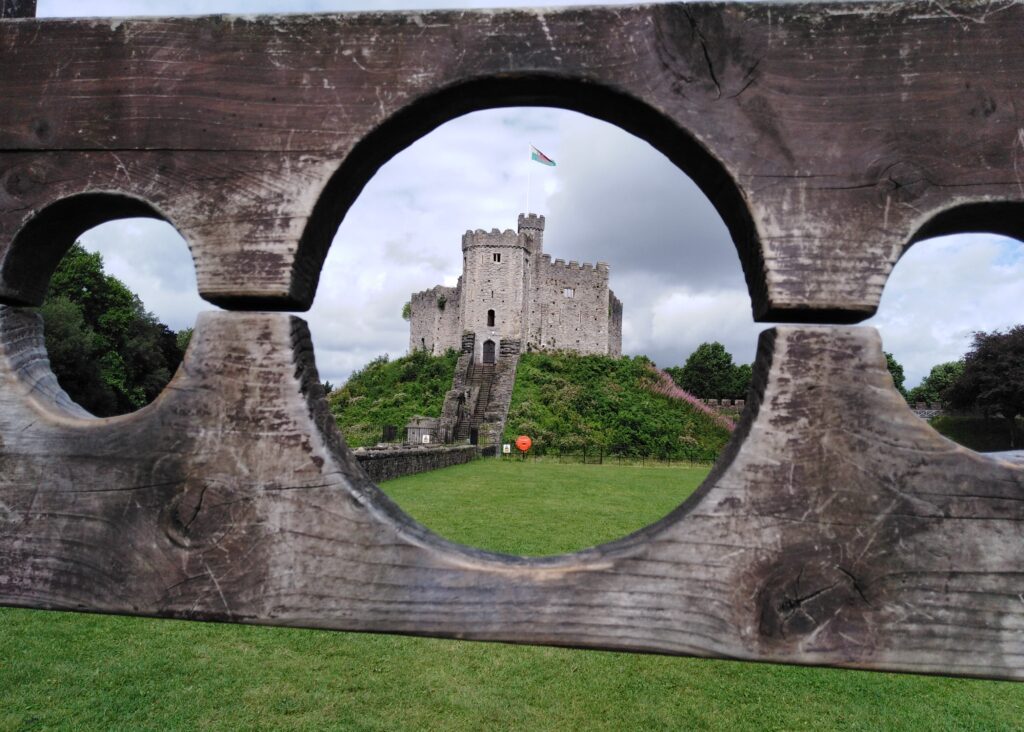
WALES has been called the ‘castle capital of the world’, boasting more than 600 castles, more per square mile than anywhere on the planet.
Some have been lived in continuously for a thousand years, while others are romantic ruins. Many are native Welsh castles, built by Welsh royal dynasties, often in very beautiful places.
The four castles of Beaumaris, Caernarfon, Conwy, and Harlech together make up the Castles and Town Walls of King Edward in Gwynedd World Heritage Site, considered to be the ‘finest examples of late 13th Century and early 14th Century military architecture in Europe’.
Some castles, naturally, have not stood the test of time. Where they once proudly stood in their commanding grandeur, now only ditches, mounds, earthworks, fragments – or occasionally nothing at all – remain to tell their story.
Below is a list of the remaining fortresses, spread across the centuries and the country, and, in some cases, restored to something approaching their former glory.
Many of the sites in Wales are cared for by Cadw, the Welsh Government’s historic environment service.
BRIDGEND
Candleston Castle: Only the tower remains of a 14th Century fortified manor house built by the de Cantelupes.
Coity Castle: Prominently sited above Heol West Plas, Coity Castle was founded in the early 12th Century and was granted to the Norman family of Turberville.
Kenfig Castle: The scanty remains of Kenfig Castle, a once great medieval fortress, rise from the dunes beside the Cynfig river.
Llangynwyd Castle: At Llangynwyd the remains of a once splendid medieval fortress are now reduced to scanty ruins and earthworks.
Newcastle: The castle’s most outstanding feature is its complete Norman doorway, which greets the visitor approaching the castle from the south.
CAERPHILLY
Caerphilly Castle: Caerphilly is the largest medieval castle in Wales and one of the most impressive in Europe.
Ruperra Castle: Private Built c1626 by Sir Thomas Morgan, steward to the Earl of Pembroke, and the latest example of the Elizabethan and Jacobean court taste for castellated mansions.
Morgraig Castle: Built between 1243 and 1267, the form of the castle is unusual and has no comparisons elsewhere. Debate has centred on whether the castle was built by the Welsh Lords of Senghenydd, or by the Norman Lords of Glamorgan.
CARDIFF
Cardiff Castle: Cardiff Castle was established within the walls of a mighty Roman fort by William I of England in about 1081.
Castell Coch: Located on a prominent wooded hillside overlooking the Taff Valley and the northern part of Cardiff, Castell Coch is a remarkable blend of solid medieval masonry and High Victorian Gothic fantasy.
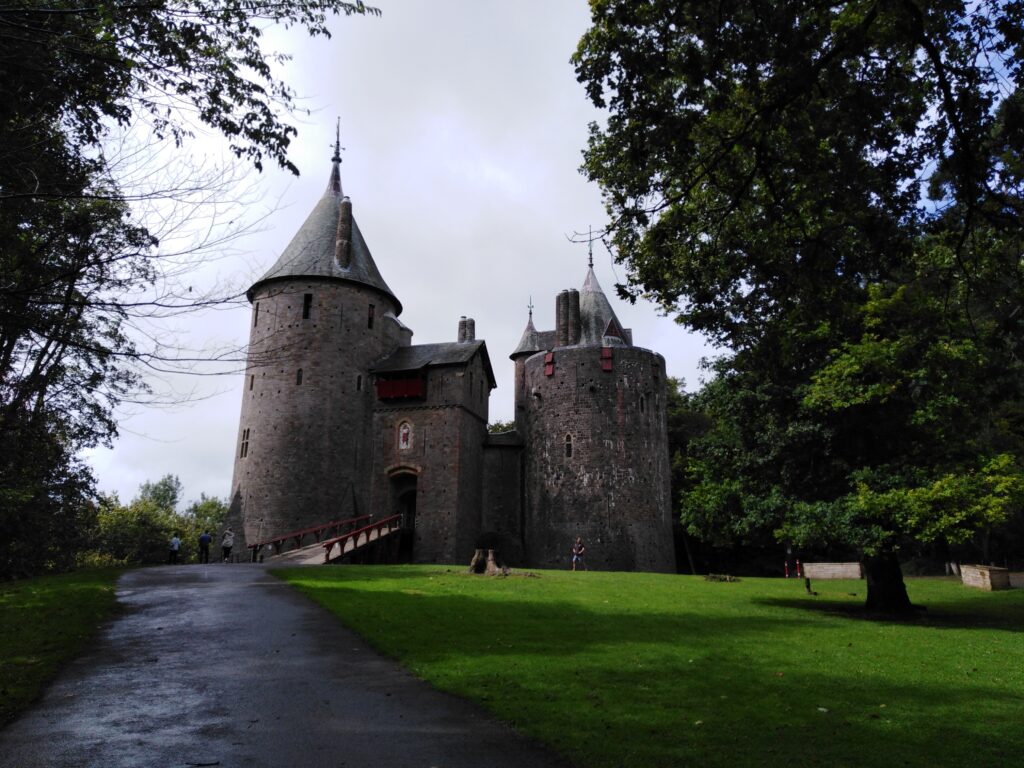
St Fagans Castle: The remains of the medieval castle at St Fagans include the southern part of a stone curtain wall. The enclosure is currently overlain by an Elizabethan mansion, with part of the surviving curtain serving to define its forecourt.
CARMARTHENSHIRE
Carmarthen Castle: Carmarthenshire Council Remains of the high medieval castle, including a shell keep, gatehouse and two towers, are obscured by modern buildings, notably County Hall.
Carreg Cennen Castle: Spectacularly set on a crag over the upper Cennen valley. A vaulted passage runs from the south-eastern corner to a cave below the east outer ward.
Dinefwr Castle: Dinefwr castle is thought to have been founded in the later 12th Century by Rhys ap Gruffudd, the Lord Rhys, and became known as the traditional capital of Dyfed.
Dryslwyn Castle: The shattered ruins of a medieval castle crown the ultimate summit of a dramatically isolated and abrupt hill rising from the Tywi floodplain.
Kidwelly Castle: An imposining ruin, Kidwelly Catle is situated on a scarp above the upper tidal limit of the Gwendraeth Fach Estuary, and considered one of the finest castles in Wales.
Laugharne Castle: The castle of Laugharne was built by the Anglo-Normans in the early 12th Century and is probably mentioned in 1116, but the existing ruins are thirteenth century and later.
Llandovery Castle: A motte and bailey castle first mentioned in 1113. Extensive remains of masonry walls and towers occupy the motte, and a shell keep enclosure is represented by half-buried footings.
Llansteffan Castle: Prominently situated on a rocky promontery, overlooking the mouth of the Tywi. Substantial and impressive remains of a rubble masonry castle dating from the 12th to the 15th Century.
Castell Moel: Shattered ruins of a possibly 16th but probably 17th Century house ruins; an early wing was incorporated into large cruciform renaissance house.
Newcastle Emlyn Castle: Shattered ruins remain of Newcastle Emlyn Castle. Excavation through the 1980s have revealed some details, but the castle is best known from a collection of medieval accounts and surveys.
CEREDIGION
Aberystwyth Castle: Work on Aberystwyth Castle commenced in 1277 under Edward I and was completed in 1289. The castle remains have been much restored and now form part of a public park.
Cardigan Castle: Situated on promontory overlooking Cardigan Bridge. Portions of the curtain wall survive in the tall embankment overlooking the bridge. There are remains of three semi-circular towers, the largest & most elaborate incorporated into the early 19th Century Castle Green House.
Ystrad Meurig Castle: The earthworks remain of an important castle established in about 1110. In the northern part of the enclosure are the foundations of a massive rectangular stone tower, 18-20m across.
CONWY
Conwy Castle: Built by Edward I, during his conquest of Wales, between 1283 and 1289. Constructed as part of a wider project to create the walled town of Conwy.
Deganwy Castle: Castell Deganwy was an early stronghold of Gwynedd and lies in Deganwy at the mouth of the River Conwy in north Wales.
Dolwyddelan Castle: Thought to have been built in the early 13th Century by Llywelyn the Great, Prince of Gwynedd and Wales.
Gwrych Castle: Gwrych Castle is a Grade I listed 19th Century country house near Abergele. The castle and estate are privately owned.
Gwydir Castle: An ancient Welsh house situated in the beautiful Conwy Valley, in the foothills of Snowdonia.
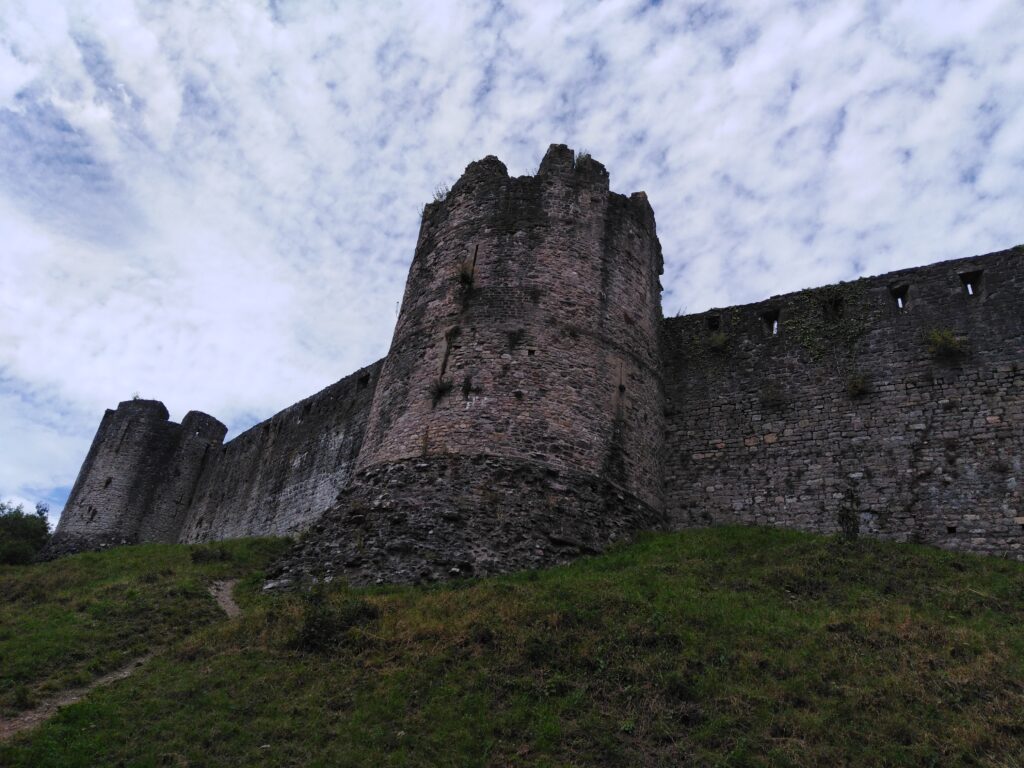
DENBIGHSHIRE
Bodelwyddan Castle: Built around 1460 by the Humphreys family of Anglesey as a manor house.
Denbigh Castle: Denbigh Castle and town walls were a set of fortifications built to control the lordship of Denbigh after the conquest of Wales by King Edward I in 1282.
Dinas Brân: A medieval castle occupying a prominent hilltop site above the town of Llangollen.
Dyserth Castle: The last castle of the British fortified defences on the Clwydian hill range in the Middle Ages. The nearby village of Dyserth got its name from the castle.
Rhuddlan Castle: Begun in 1277 it was the first of the revolutionary concentric, or ‘walls within walls’, castles designed by master architect James of St George.
Ruthin Castle: A medieval castle fortification, it was constructed during the late 13th Century by Dafydd ap Gruffydd, the brother of Prince Llywelyn ap Gruffudd, on a red sandstone ridge overlooking the valley. Part of the ancient walls still remain and now form part of the Ruthin Castle Hotel.
Twthill, Rhuddlan: A Norman castle located near the town of Rhuddlan; historic names for the site include Toothill and Tot Hill Castle and it is also known as Old Rhuddlan Castle.
Prestatyn Castle: 12th Century Motte & Bailey castle.
FLINTSHIRE
Caergwrle Castle: Also known as Queen’s Hope in scholarly texts, it was built by the Welsh under Dafydd ap Gruffydd in service to Edward I of England.
Ewloe Castle: One of the last fortifications to be built by the native Princes of Wales, was abandoned at the beginning of the invasion of Wales by Edward I in 1277.
Flint Castle: The first of a series of castles built during King Edward I’s campaign to conquer Wales.
Hawarden Castle: Hawarden Castle was the estate of the former British Prime Minister William Ewart Gladstone, having previously belonged to the family of his wife, Catherine Glynne. Built in the mid-18th Century, it was later enlarged and externally remodelled in the Gothic taste.
Mold Castle: A motte-and-bailey castle erected around 1072.
GWYNEDD
Bryn Bras Castle: A Grade II listed country house located on the old road between Llanrug and Llanberis.
Caernarfon Castle: This fortress-palace on the banks of the River Seiont is grouped with Edward I’s other castles at Conwy, Beaumaris and Harlech as a World Heritage Site. But for sheer scale and architectural drama Caernarfon stands alone.
Carndochan Castle: A ruined stone castle near Llanuwchllyn, probably built in the early 13th Century.
Castell y Bere: Constructed by Llywelyn the Great in the 1220s, the stone castle was intended to maintain his authority over the local people and to defend the south-west part of the princedom of Gwynedd.
Criccieth Castle: Built by Llywelyn the Great, but heavily modified following its capture by English forces of Edward I in the late 13th Century.
Dinas Emrys: 12th Century keep on early medieval site.
Dolbadarn Castle: A fortification built by the Welsh prince Llywelyn the Great during the early 13th Century, at the base of the Llanberis Pass.
Harlech Castle: Grade I-listed medieval fortification, constructed atop a spur of rock close to the Irish Sea.
Penrhyn Castle: 19th Century neo-Norman castle between Snowdonia and the Menai Strait.
ISLE OF ANGLESEY
Castell Aberlleiniog: A motte and bailey fortress near the village of Llangoed, built between 1080 and 1099 by Hugh d’Avranches, 1st Earl of Chester.
Beaumaris Castle: Built as part of Edward I’s campaign to conquer north Wales after 1282.
MERTHYR TYDFIL
Morlais Castle: A 13th Century castle located above the Taff Gorge near the town of Merthyr.
Cyfarthfa Castle: A castellated mansion that was the home of the Crawshay family, ironmasters of Cyfarthfa Ironworks in Park, Merthyr Tydfil.
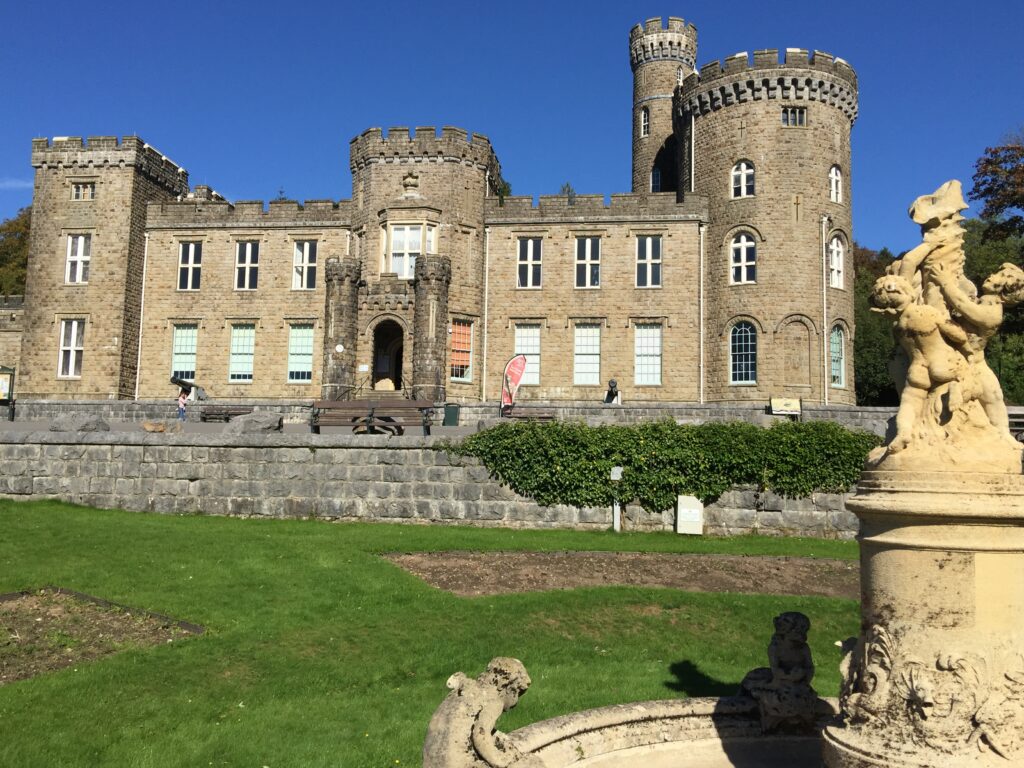
MONMOUTHSHIRE
Abergavenny Castle: The site of a massacre of Welsh noblemen in 1175, and was attacked during the early 15th Century Glyndŵr Rising.
Betws Newydd Castle: 15th Century castle.
Caldicot Castle: Extensive stone medieval castle, built near the site of Harold Godwinson’s former Saxon castle by the Norman earls of Hereford from about 1100.
Castell Arnallt: The site of Castell Arnallt, sometimes known as Castle Arnold, is located near the village of Llanover in the Usk Valley.
Chepstow Castle: The oldest surviving post-Roman stone fortification in Britain. Located above cliffs on the River Wye, construction began in 1067 under the instruction of the Norman Lord William FitzOsbern.
Dingestow Castle: Two castles, one 11th Century the other 12th.
Grosmont Castle: Ruined castle in the village of Grosmont. The fortification was established by the Normans in the wake of the invasion of England in 1066, to protect the route from Wales to Hereford.
Llanfair Kilgeddin Castle: A prominent motte with defensive ditch lying next to a farm. The edges of the ditch are worn but still visible.
Llangibby Castle: Also known as Tregrug Castle, its ruins include a huge, rectangular, walled enclosure on top of a hillside, surrounded by ditches, and including the remains of a large stone tower, known as the Lord’s Tower, and a gatehouse.
Castell Troggy: Remains of a castle at Llantrisant built by Roger Bigod III, earl of Norfolk, as a hunting lodge.
Llanvair Discoed Castle: The remains of this early 13th Century castle are very overgrown and inaccessible. Two of the towers are still standing, along with one of the two forming the gatehouse. Only part of the outer curtain wall remains as it has been used as a source of stone from the 17th Century. A modern house has been built in the outer bailey.
Monmouth Castle: Located close to the centre of Monmouth on a hill above the River Monnow.
Newcastle: A Norman motte-and-bailey castle site, from which the small village derives its name.
Penrhos Castle: A fine motte, surrounded by a double bank and ditch, in a commanding position about three miles north of Raglan Castle.
Pen y Clawdd Castle: A ditched mound with a double moat, roughly circular in shape.
Raglan Castle: Late medieval castle located just north of the village of Raglan.
Skenfrith Castle: An early 13th Century castle, built beside the River Monnow to command one of the main routes from England.
Trellech Castle: Tump Terret is situated within the grounds of Court Farm. It dates back to Norman times, as the site of a small motte and bailey castle; traces of its surrounding ditch remain.
Usk Castle: A Grade I listed building as of February 16, 1953. Within the castle, and incorporating parts of its gatehouse, stands Castle House.
White Castle: White Castle is the best preserved and most imposing of the trio of Monmouthshire fortresses known as the ‘Three Castles’ – which includes Grosmont and Skenfrith – built to control the border.
NEATH PORT TALBOT
Neath Castle: Norman castle located in the town centre of Neath. Construction was begun by Robert, Earl of Gloucester, the nominal Lord of Glamorgan, at a date estimated between 1114 and 1130.
NEWPORT
Caerleon Castle: Norman castle erected in 1085.
Newport Castle: Ruined castle on the River Usk, built in the 14th Century.

Pencoed Castle: A ruined Tudor mansion, largely dating from the 16th Century, in the parish of Llanmartin, now within the city of Newport.
Penhow Castle: Dates from the early 12th Century. Extended and reconstructed in almost every century since, it has been claimed to be the oldest continuously-inhabited castle in Wales.
PEMBROKESHIRE
Benton Castle: A small fortification, now in use as a private house, in a wooded area overlooking the Cleddau river.
Carew Castle: The Carew family, who take their name from this site, still own the castle and lease it to the Pembrokeshire Coast National Park for administration.
Cilgerran Castle: Medieval fortress overlooking the River Teifi.
Haverfordwest Castle: Established during Norman times in 1120, but much of the architecture remaining is dated to 1290.
Llawhaden Castle: A fortified Bishops Palace rather than a castle, but impressively located on high ground overlooking The Vale of the Eastern Cleddau.
Manorbier Castle: Occupies a commanding position overlooking the beautiful Manorbier Beach.
Narberth Castle: A ruined Norman fortress.
Newport Castle: The earliest castle on the site was built in the 13th Century, but the present structure was built in the 19th Century and is a private residence.
Pembroke Castle: A medieval castle, the original family seat of the Earldom of Pembroke. Underwent major restoration during the early 20th Century.
Picton Castle: A medieval castle near Haverfordwest. Originally built at the end of the 13th Century by a Flemish knight.
Roch Castle: A 12th-century castle, located near Haverfordwest. Built by Norman knight Adam de Rupe in the second half of the 12th Century, probably on the site of an earlier wooden structure.
Tenby Castle: Only a small tower remains, perched on top of Castle Hill, almost surrounded by the sea. The old town walls, however, are remarkably complete, containing a maze of narrow streets.
Upton Castle: A 13th Century castle or fortified manor house with an associated chapel, located near Cosheston.
Wiston Castle: Regarded as one of the best-preserved motte-and-bailey castles in Wales.
Wolf’s Castle: The village of Wolfscastle gets its name from the motte and bailey castle erected by the Normans on what is called the Landsker Line – a line of forts stretching from Roch, near Newgale, to Amroth and a dividing line between The Normans and The Welsh in the north.
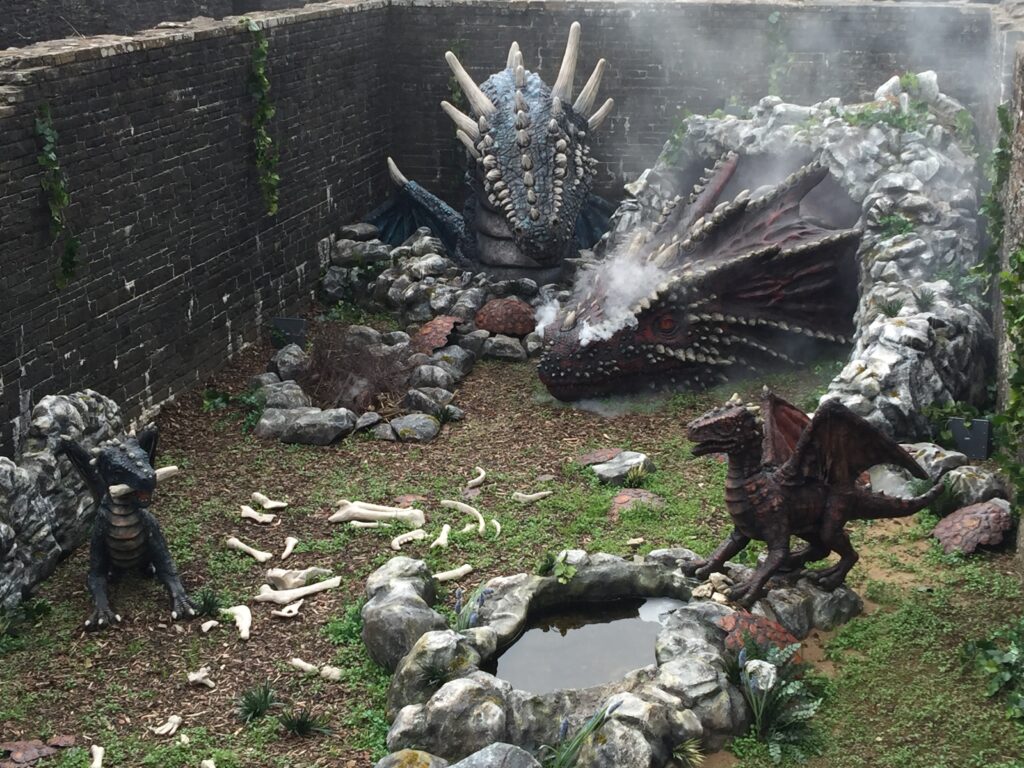
POWYS
Aberedw Castle: Two castles, one 11th and one 13th Century
Blaenllyfni Castle: A privately owned ruinous stone castle near the village of Bwlch.
Brecon Castle: Built by the Norman Lord Bernard de Neufmarché in 1093, and was frequently assaulted by the Welsh in 13th and 15th centuries.
Bronllys Castle: Sturdy stone tower with a turbulent history, first built as a basic motte-and-bailey castle in the late 11th or early 12th Century.
Crickhowell Castle: Also known as Alisby’s Castle; a conspicuous feature of the small market town and occupies a vantage point with commanding views.
Dolforwyn Castle: A Welsh medieval castle above the village of Abermule. The fortification was established by Llywelyn ap Gruffudd, Prince of Gwynedd in the late 13th Century.
Hay Castle: A medieval fortification and 17th Century mansion house in the small town of Hay-on-Wye.
Maesllwch Castle: Private 19th Century house in castellated style.
Montgomery Castle: A stone masonry castle looking over the town of Montgomery, it is one of many Norman castles on the border between Wales and England.
Powis Castle: Originally built c1200 as a fortress of the Welsh Princes of Powys.
Tretower Castle: Built around the beginning of the 12th Century as a motte and bailey castle and this was probably replaced mid-century by a stone shell keep.
RHONDDA CYNON TAF
Llantrisant Castle: Ruins on a good elevation, commanding extensive views of surrounding country.
SWANSEA
Loughor Castle: Built around 1106 by the Anglo-Norman lord Henry de Beaumont, during the Norman invasion of Wales.
Oxwich Castle: A castle in name only as it is a grand Tudor fortified manor house built in courtyard style.
Oystermouth Castle: Norman stone castle sitting majestically on a hill in Mumbles with stunning views overlooking Swansea Bay.
Pennard Castle: Built in the early 12th Century as a timber ringwork following the Norman invasion of Wales.
Penrice Castle: A 13th Century castle near Penrice on the Gower Peninsula.
Swansea Castle: Located in the city centre of Swansea; founded by Henry de Beaumont in 1107.
Weobley Castle: A 14th-century fortified manor house on the Gower Peninsula.
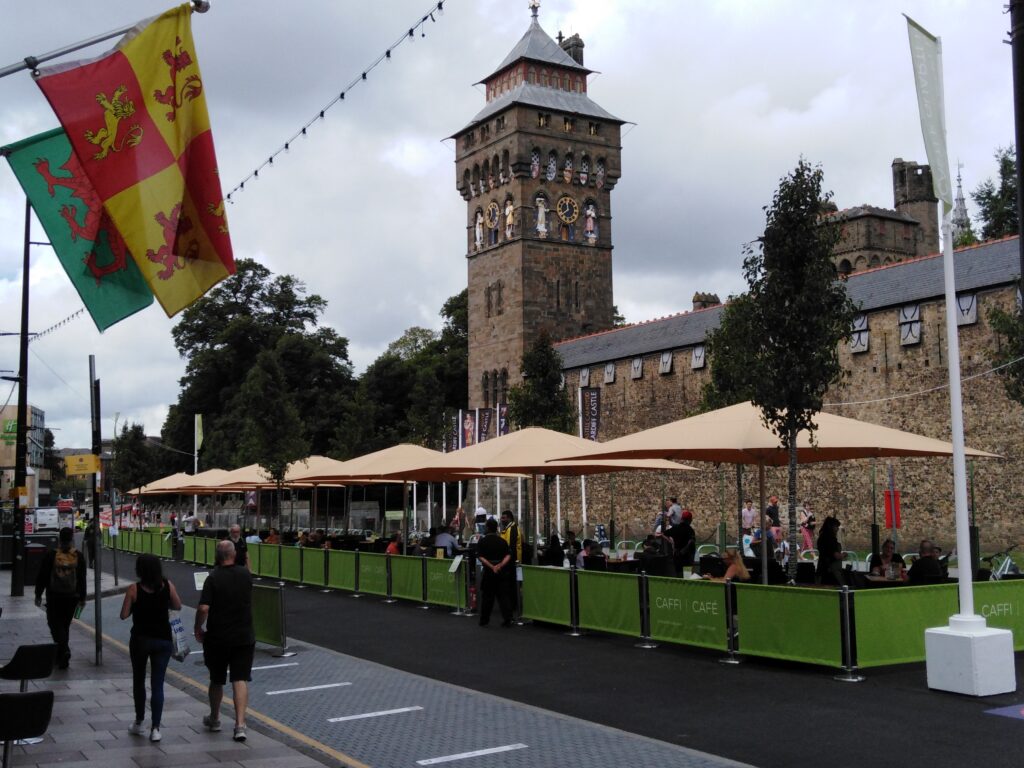
VALE OF GLAMORGAN
Barry Castle: A fortified manor house built on the site of an earlier Norman structure.
Fonmon Castle: A fortified medieval castle.
Hensol Castle: A castellated mansion in the gothic architecture style dating from the late 17th Century or early 18th Century, now a wedding and conference venue for The Vale Resort.
Ogmore Castle: Grade I listed castle ruin located near the village of Ogmore-by-Sea.
Old Beaupre Castle: A ruined medieval fortified manor house located in the community of Llanfair, outside Cowbridge.
Penmark Castle: Remains of a 13th Century castle at Rhoose.
St Donat’s Castle: Positioned on cliffs overlooking the Bristol Channel, the site has been occupied since the Iron Age.
St Quintin’s Castle: Located in the village of Llanblethian, Cowbridge, the site was first occupied with a defensive structure in about 1102 and the gatehouse and further building work took place around 1312.
WREXHAM
Chirk Castle: Completed in 1310 during the reign of the conquering Edward I to subdue the last princes of Wales.
Holt Castle: A medieval castle sited on the Welsh–English border by the banks of the River Dee.
For more information on Welsh castles visit Cadw and National Trust